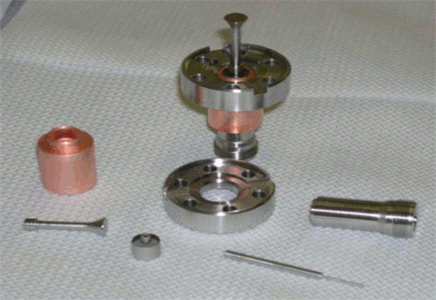Low-Temperature RadioFrequency Feedthrough For CW Applications

Low-Temperature RadioFrequency Feedthrough For CW Applications.
Additional Links
Jefferson Lab continues to develop innovative solutions to problems shared by the accelerator community. A common challenge in accelerators based on superconducting radiofrequency technology (SRF) is the presence of additional radiofrequency waves inside the accelerator cavities, in addition to the primary frequency needed for accelerating particles. These so-called higher-order modes (HOMs) can seriously degrade beam quality.
For optimum particle acceleration, these HOMs must be extracted without significantly affecting the desirable accelerating functions. To address this challenge, several institutions, including Jefferson Lab, have adopted and scaled a particular design of HOM coupler that was developed at DESY for use on the Tesla cavities.
Originally intended to serve the pulsed-RF conditions of a collider, the couplers encountered difficulties when employed in continuous wave (CW) applications, such as Jefferson Lab’s Continuous Electron Beam Accelerator Facility (CEBAF), and early tests showed the technology to be unusable for the CEBAF 12 GeV upgrade. The problem was excessive heating of the coupler when employed as originally designed.
Jefferson Lab staff developed a novel solution. The modified design allows heat generated in the coupler to bleed away from the accelerator cavity, using a superconducting niobium RF probe that is kept thermally anchored via a single-crystal sapphire dielectric that is brazed between the niobium probe and an externally accessible copper collar.
The solution has been demonstrated to be effective for the CEBAF 12 GeV upgrade cavities and also in Tesla-style cavities tested at BESSY and Daresbury. SURA has filed a patent application for this invention (co-inventors G. Wu and L. Phillips), and a non-exclusive license has been issued to ACCEL Instruments GmbH to produce and market the version for Tesla-style cavities. The units successfully tested at BESSY and Daresbury were produced under this license.

